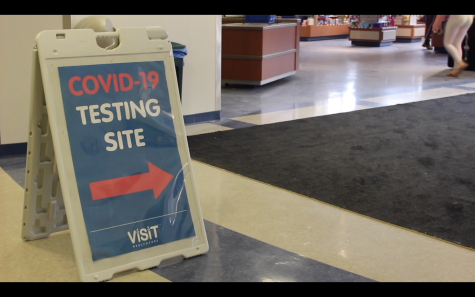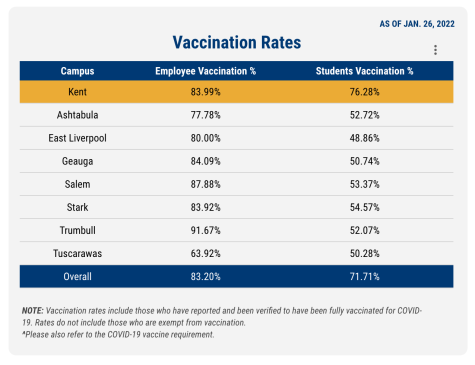Students and professors alike manage the positive and negative aspects of classroom technology
February 16, 2021
As vaccines become more readily available, more schools are opening up. Students and teachers are looking for ways to improve the classroom environment using technology acquired during the pandemic, but some professors prefer it the old way.
“My energy from teaching comes from face-to-face,” said Gene Shelton, a media and journalism professor at Kent State. “I had to make a lot of adjustments in my curriculum, testing and things of that nature.”
Another professor who had to make extensive changes in their curriculum is Richard Steigmann-Gall, who has been teaching history at Kent State since 2000. One of Steigmann-Gall’s favorite courses, World History: Modern, has a final where the students were tasked with creating a piece of historical fiction. The final paper aims to have the students’ protagonists travel to multiple countries and continents in a historical period of their choice. Unfortunately, due to COVID-19, the project had to be cut out of the curriculum.
“Some people who were struggling in the class, or couldn’t really feel a connection to the class, really knocked that assignment out of the park,” Steigmann-Gall said. “They made it something that they felt invested in.”
Another issue of teaching in a pandemic is one of struggling with technology. According to a survey conducted by Education Week, almost 9 out of 10 teachers report spending more time troubleshooting technology problems during COVID-19.
Products like Zoom and Microsoft Teams become necessary to everyday life in the classroom. However, online meetings often can’t achieve the same personal connections students have with teachers in regular schooling conditions.
“There’s no advantage for anything to be online at all,” Steigmann-Gall said. “I have to pretend that my iPhone is 60 people who just love what I’m saying.”
The frustration felt by teachers and students isn’t just from video conferencing applications like Zoom. The increased use of Blackboard can often leave professors feeling overwhelmed.
“It is very tedious to give tests and quizzes. You have to enter each one individually,” Shelton said. “It was so easy to just run to the copy machine and run off 150 copies, and you’re done.”
Despite all the difficulties with classroom technology during COVID-19, some technology has improved students’ and professors’ experience. Blackboard Collaborate Ultra allows students to view previous lectures at any time.
“If you miss a class, all you have to do is view the recording of the lecture,” Shelton said. “You don’t have to ask for notes or anything like that. It’s all there for you to see at your convenience.”
The convenience offered by recording lectures also has downsides. In some cases, students aren’t able to personally connect to an online lecture instead of an in-person class. In a survey of undergraduate and graduate students, Student Research Experience in the Research University found that 76 percent of undergraduates and 56 percent of graduate students identified the lack of motivation for online learning as the biggest obstacle to remote learning. This negative trend shows how a lot of the virtual classroom technology that came about due to the pandemic might go away after the pandemic.
Plenty of things have changed in classrooms across the world over the past year, but the classroom of the future might look more like the classroom of the past.
Zach Shepherd covers technology. Contact him at [email protected].


















